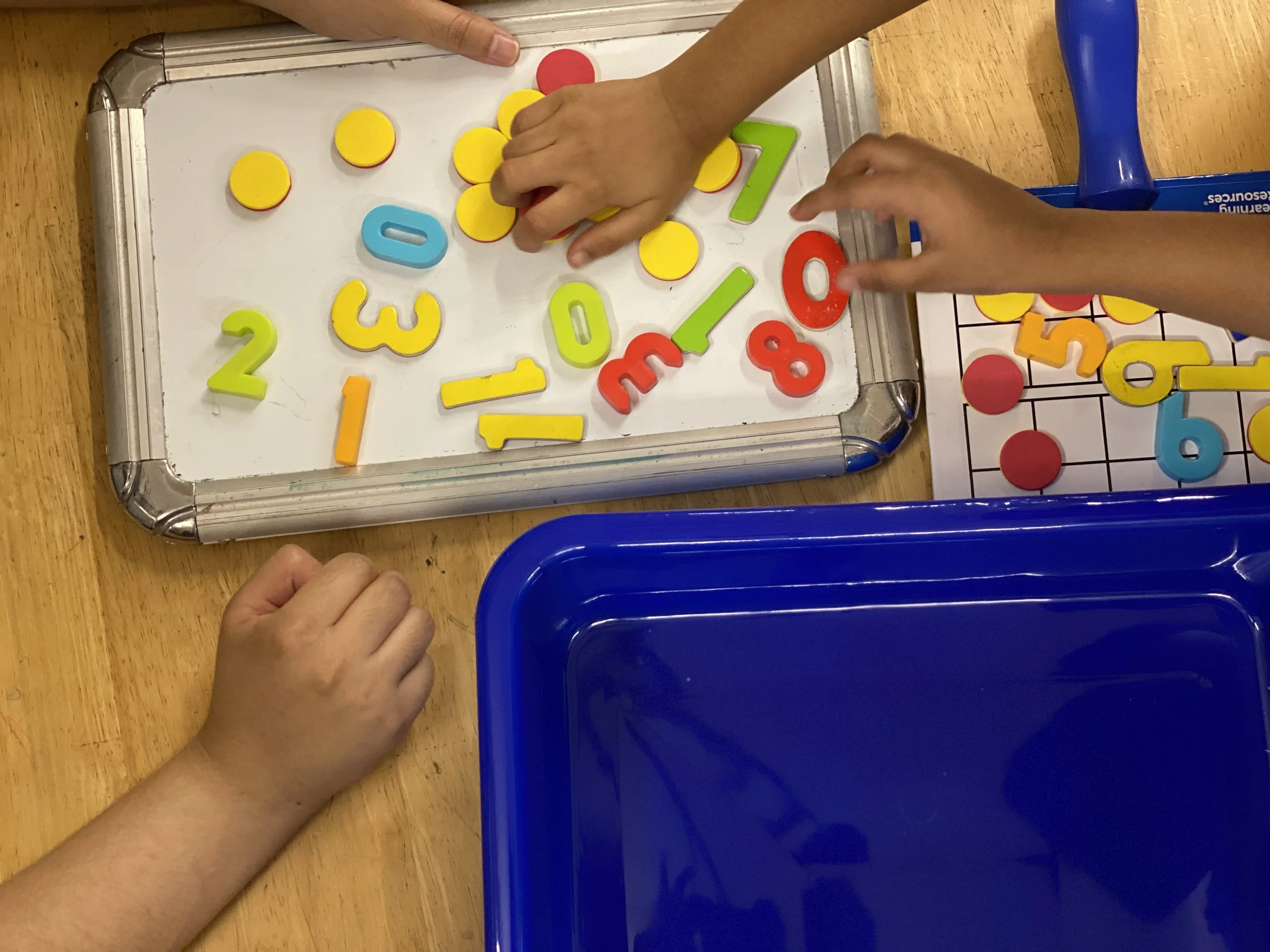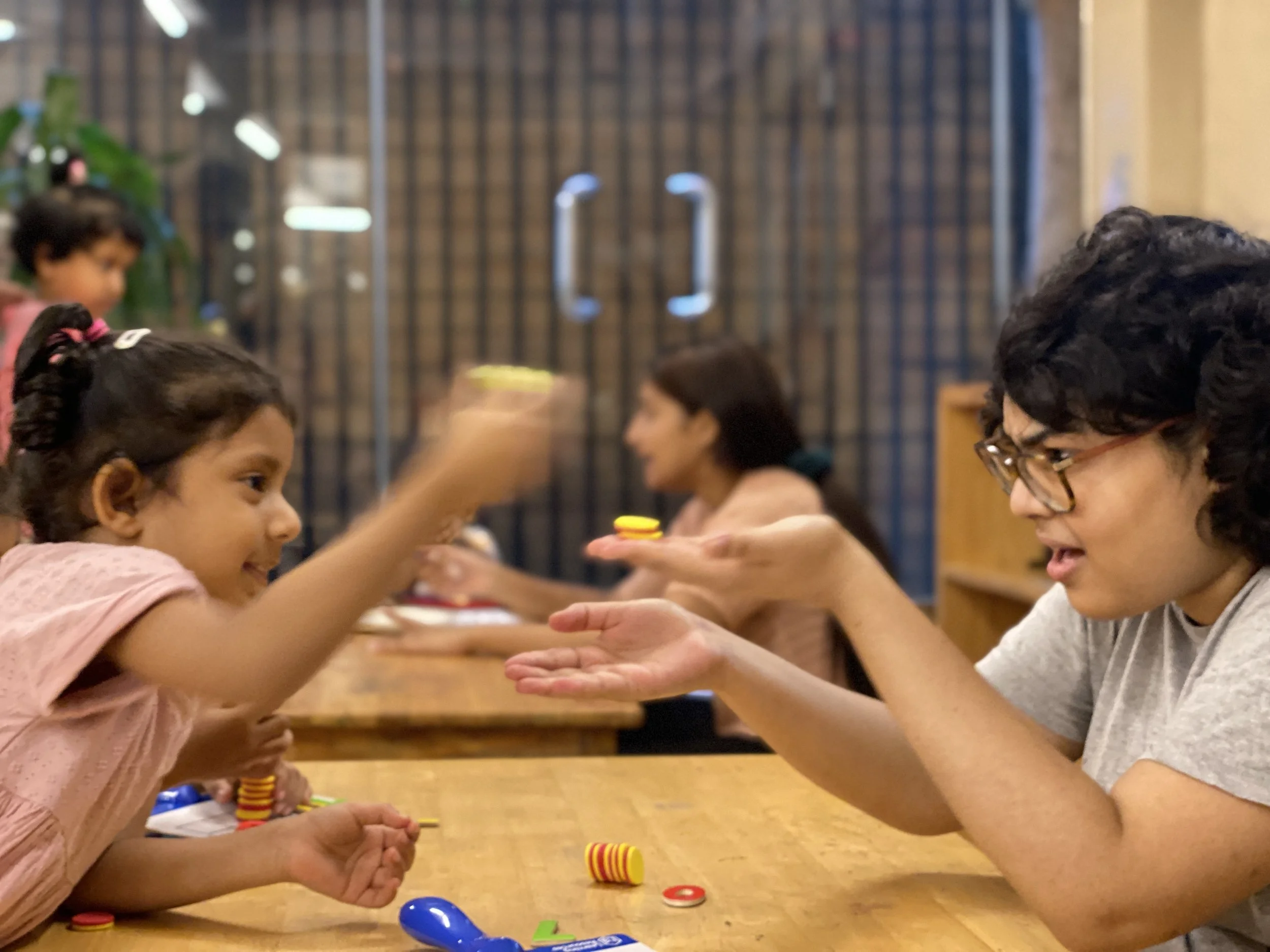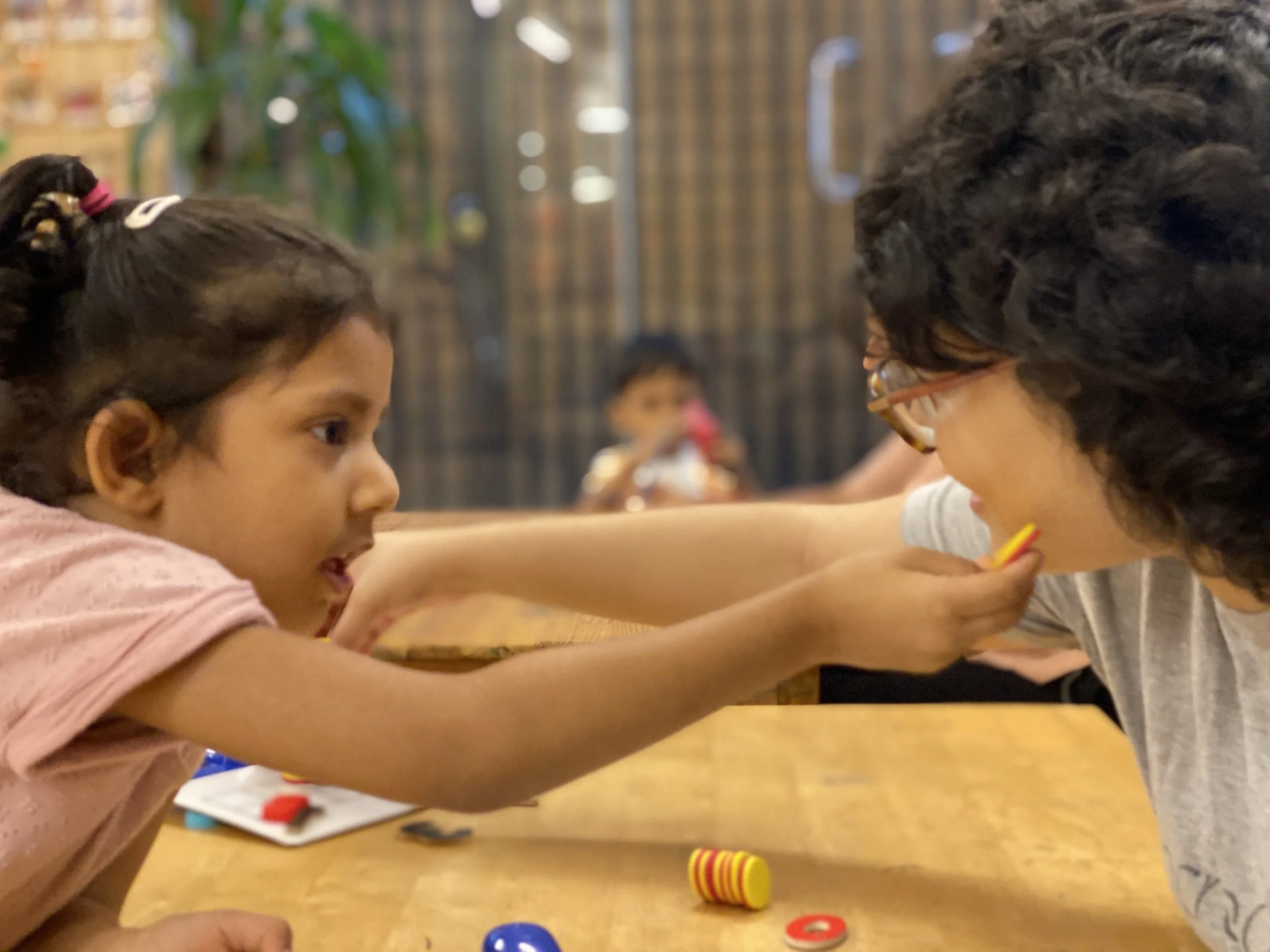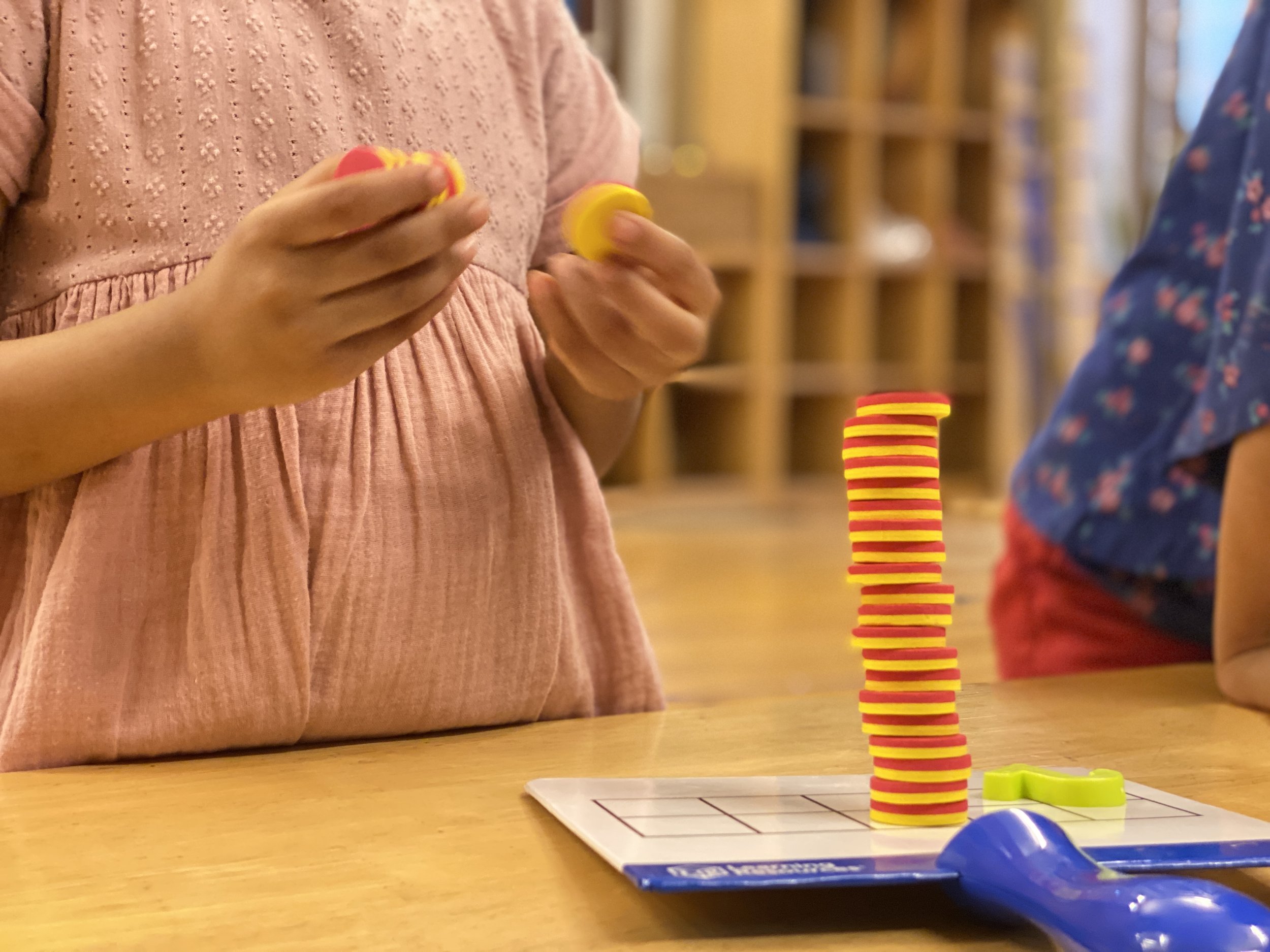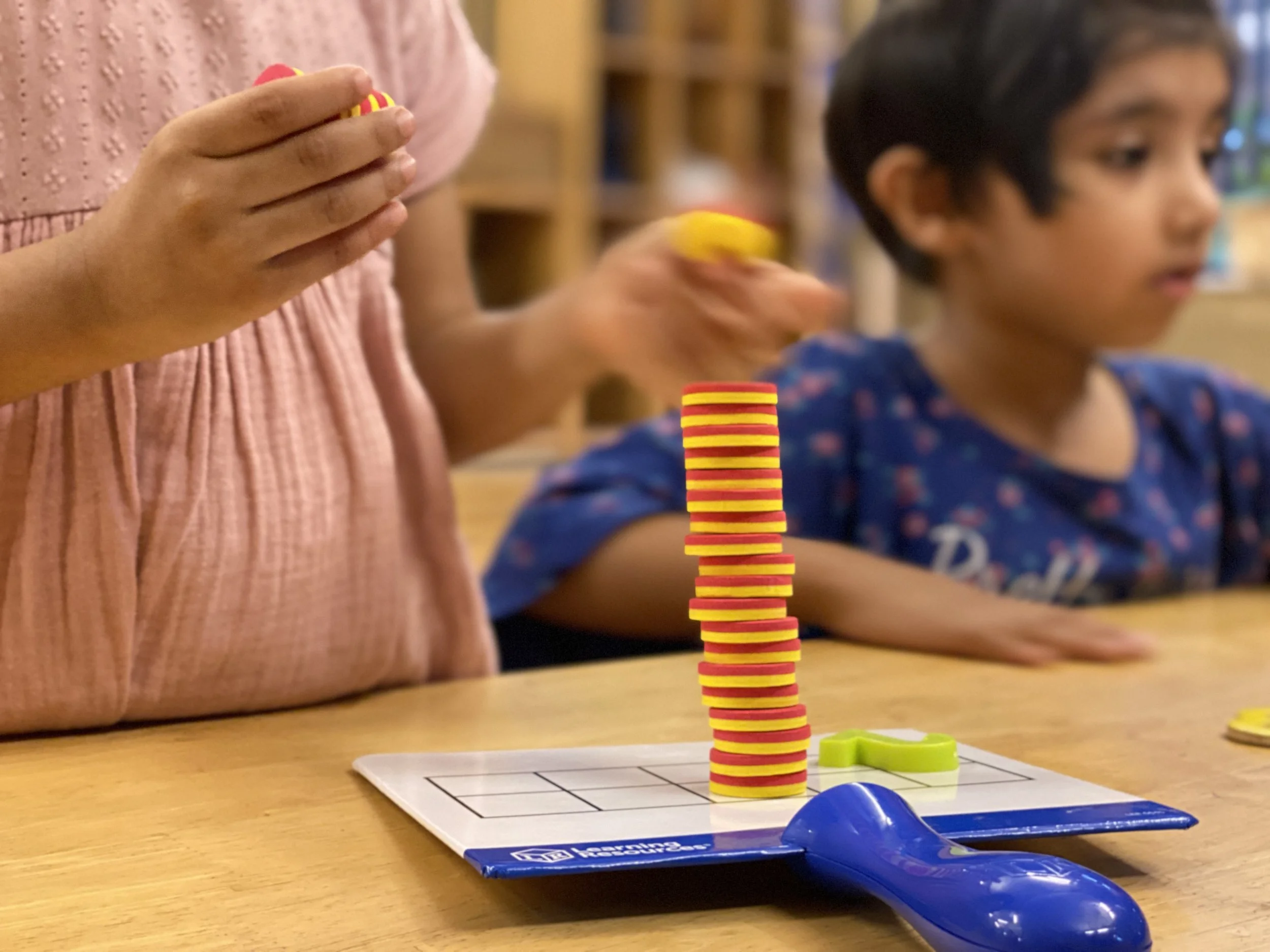Experimenting with Bicolour Magnetic Counters!
Date: 29th June, 2022; Wednesday.
Facilitators: Sanmoyee, Priyanka and Khushi.
Participants: Arya, Maryam and Rishit.
Materials used: Bicolour coin magnets, magnetic counting boards, magnetic whiteboard, magnetic number shapes.
Tags: Maths, Science, Attention, Magnets, Exploration.
Setup and Objective
This activity was set up on a table at worktime. Magnetic counting boards, bicolour counting magnets, magnetic number shapes and a magnetic whiteboard were kept on the table as invites for play. Each of the magnetic counting boards had 10 boxes marked on the surface of a grid.
The objective was for children to explore numbers and counting through the medium of magnets, combining mathematical and scientific exploration. Apart from encouraging their natural curiosity, the activity was also an opportunity for them to use their fine motor skills.
Introduction to the materials! Magnetic counters, magnetic number shapes, magnetic counting board and magnetic whiteboard.
Beginning the experimentation!
How it happened
Arya and Maryam approached the table, and were immediately attracted by the bicolour counting magnets. They each took a counting board. Facilitator Priyanka first asked them to place 1 magnet on each of the 10 boxes on the board. Then, she gave them a challenge: Can you take away 3? If 3 magnets are gone, how many are left? Both Arya and Maryam were able to take away and count the remaining magnets.
From here on the activity continued with a free exploration of the magnets themselves. The children observed and marvelled at how the counters were 'sticky', how they could stick to each other and the boards, how they could stick on both red and yellow sides, could be stacked to make a tower, and could hang upside-down from the board. They each attempted to make the tallest magnet tower by stacking, and were surprised to find that sometimes the magnets wanted to stick, whereas other times they pushed each other away! They quickly found that this depended on which side the magnet was facing. They found that short magnet towers could hang upside-down from the boards and could counteract gravity, but taller towers could not hold their weight. They each counted the number of magnets in the towers to estimate height.
Rishit joined the table and asked for a counting board and counting set of his own. He was focused on independent exploration, which also led him to stacking and tower-making.
Khushi Didi asked an interesting question: Do these magnets stick to everything? An experiment immediately took place! No, the children observed, magnets did not stick to Khushi Didi… but Sanmoyee Didi was strangely sticky! Arya decided to experiment with Sanmoyee Didi's sticky face, and tried magnetic numbers in various positions. It was unclear whether Sanmoyee Didi's stickiness was due to magnetism.
The children then tried to scatter the magnets. Scattering proved to be hard, because the magnets immediately jumped up to stick to each other. The magnets seemed to be able to self-assemble into towers. The children tried rolling these towers on the table surface.
Sanmoyee Didi asked the kids: Do you like Oreos? Or burgers? The magnet towers looked like Oreo sandwiches! The children imagined how it would be to eat these strangely coloured Oreo sandwiches, if the cream was yellow and the biscuits were red.
The activity ended with Rishit, Arya and Maryam enthusiastically participating in cleanup. They gathered magnetic counters from the table and the floor and helped to assemble the tray.
Are you magnetic too?
Perhaps not.
I have the tallest tower!
How many counters do you see?
One big Oreo sandwich!
Skills Used
Counting
Focus and attention
Fine motor skills
Outcome and Future
The success of this activity opens the door for further magnet exploration. Future materials could include bar magnets, horseshoe magnets, compasses, iron filings, ball bearings, etc. The children became familiar with the magnetic counting set and were able to use it as a vehicle to explore counting. Play was also successfully extended to satisfy the children's curiosity. This step forward may lead to magnet-based projects in the future, eg. floating compass, magnetic mazes, magnet chains.

